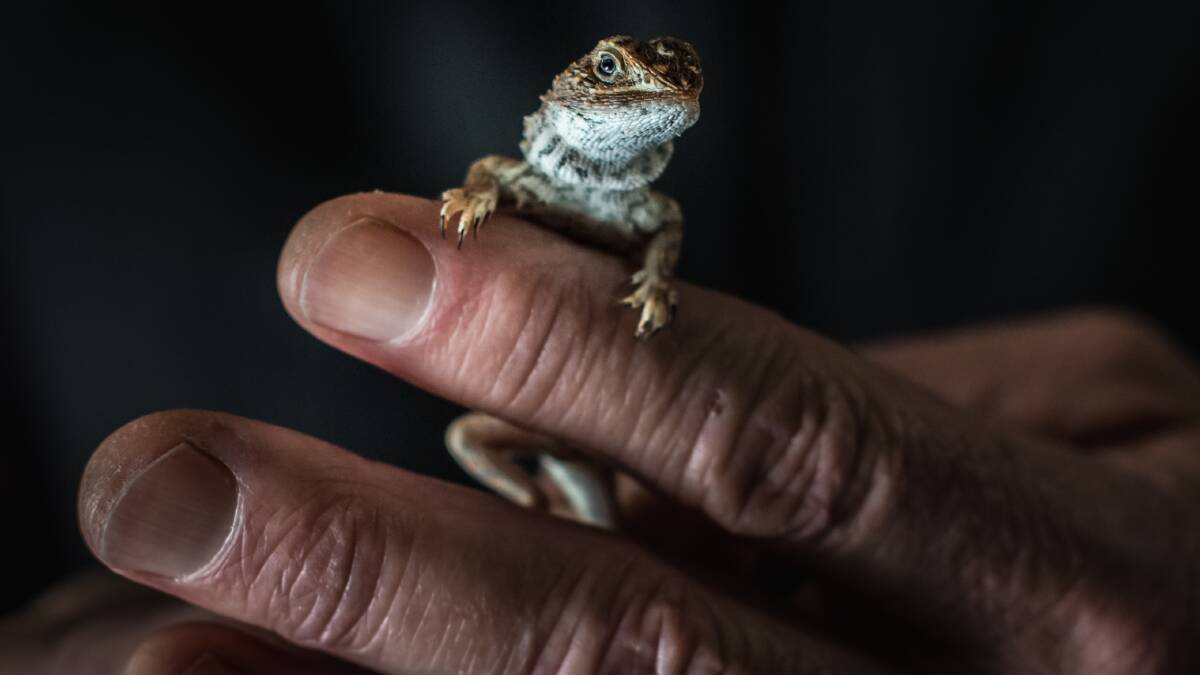If there was ever an animal that symbolised the city Australia's politicians call home, it would be an earless reptile.
Subscribe now for unlimited access.
or signup to continue reading
Scientists have found the endangered grassland earless dragon in Canberra is one of four unique species, distinct from sparse populations once found as far as Victoria.

The research, published on Thursday, could have big implications for developments and conservation efforts in Canberra.
University of Canberra ecologist Professor Stephen Sarre said the dragon is even rarer than previously believed, with only small scattered populations in Canberra and Queanbeyan.
But it also means, having not being spotted in Victoria for 50 years, that the Victorian species is now likely extinct.
"It would sadly be the first documented extinction of a reptile on the Australian mainland since European colonisation," Professor Sarre said.
Worse still, the Bathurst species hasn't been seen for 30 years, with only three preserved specimens in Australia.
Once also found in the Majura Valley - north of Canberra Airport - the last known population is in the Jerrabomberra Valley to Canberra's south-east, slightly crossing the border into Queanbeyan.
There conservationists and the ACT government are desperately trying to protect the endangered species.
Just recently, an environmental report found the proposed upgrade to the Monaro Highway in Hume would have a "significant impact" on the earless dragon population and Professor Sarre warned the South Jerrabomberra development near Queanbeyan could also impact the dragon.
The earless dragon is listed as endangered by the Commonwealth, the ACT, NSW and Victoria and the research means there are distinct species in Canberra, Cooma and Bathurst, as well as the likely extinct Victorian species.
Canberra's dragon will also be given its own scientific name: Tympanocryptis lineata, once Tympanocryptis pinguicolla.
Genetic tests showed the separated populations were distinct; physical studies showed Canberra dragons had longer tails and different-shaped scales on their backs.
One of the biggest threats to the species is climate change and associated drought; its population collapsed locally after the Millennium Drought.
But another threat is habitat destruction. Professor Sarre said the Canberran dragon was once as far spread as Dickson. But then what happened?
"We built Canberra," he said.
Knowledge about the species is limited, including what its actual population in the wild is, which made it harder to know what effect climate change is having on its numbers.
Professor Sarre warned any further loss of Canberra grasslands could have a big impact on the tiny population.
"People have tended not to think too hard about grasslands," Professor Sarre said.
"They don't actually realise they're quite interesting and diverse ecosystems."
He said the ACT government had been working hard to help the population but this news would require a rethink.
"There will be pressure to manage what's left in a different way," he said. "They are unique, from that point they have value."
ACT park rangers recently trialled using a dog to conduct population checks of the dragon in Jerrabomberra.
While the invasive weed is common across Canberra, it's too dense for the dragons to move through and can eat up their native habitat.
The joint project with University of Melbourne, South Australia Museum and Museum Victoria was published in the Royal Society Open Science journal.


